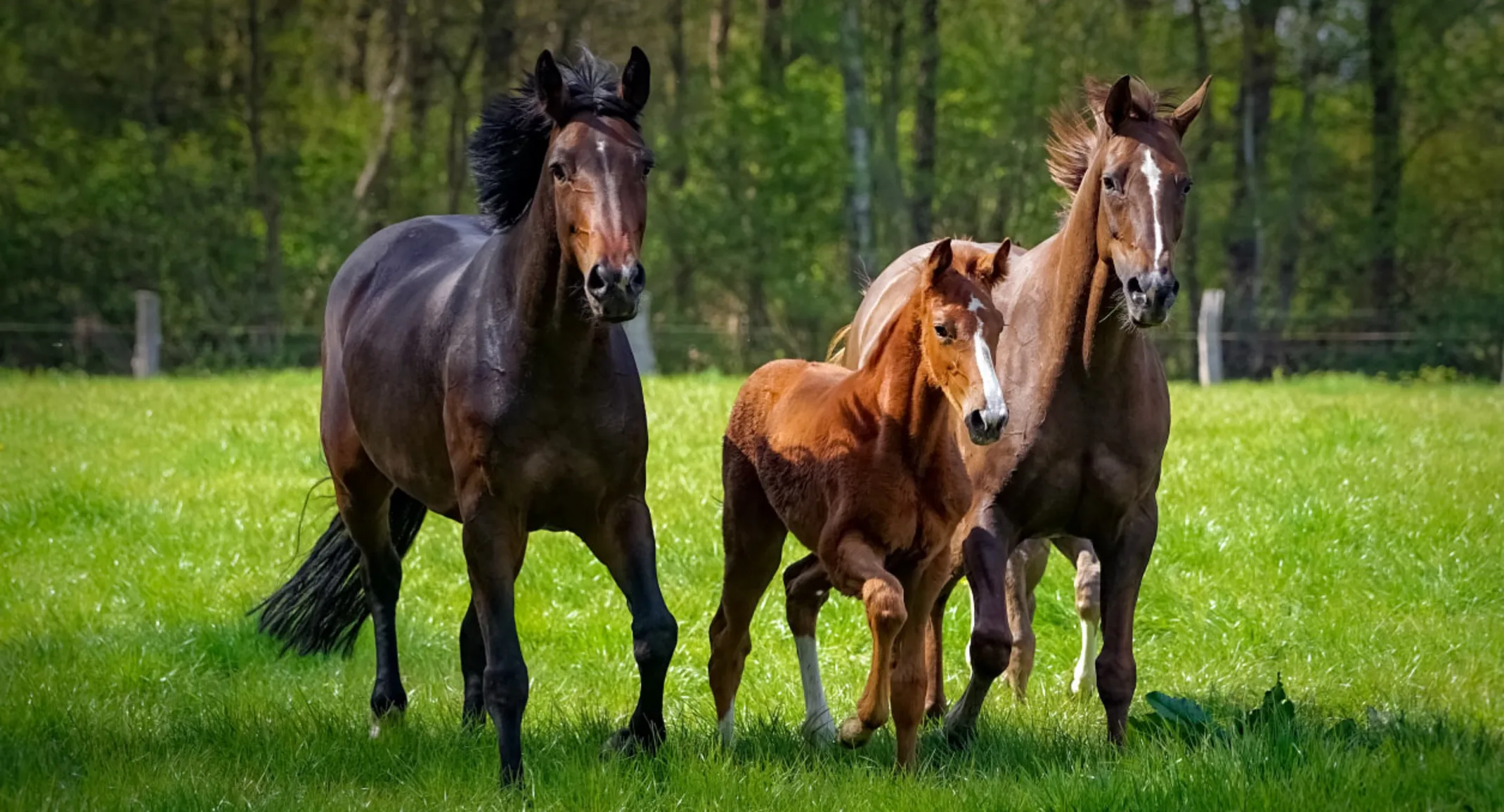Thinking of Breeding Your Mare?
General

You’ve finally made the big decision. You’ve decided to breed your mare for the first time this coming spring. You’ve picked out the perfect stallion for her and decided on whether to undertake this project at home or send her off to a breeding farm. To ensure that everything can go as much according to your plan as possible, there are some preliminary steps that you should take.
First, have a veterinarian experienced in equine reproduction perform a complete breeding soundness examination on your mare. At a minimum, the examination will include an ultrasound exam of your mare’s reproductive tract, a uterine culture, and an assessment of the conformation of her external genitalia. Depending on the circumstances and your mare’s age and previous reproductive history, the exam may also involve a uterine biopsy, a complete physical examination, and bloodwork.
The ultrasound examination will be used to visualize your mare’s ovaries and uterus. In the winter months, a mare’s ovaries are in their dormant stage, but an experienced veterinarian can still use the ultrasound to determine whether they appear normal. In addition, the ultrasound image will show whether the mare has any uterine cysts (these are benign and usually appear in older mares) and whether she has any accumulation of uterine fluid. Fluid in the uterus is abnormal and may contribute to difficulty getting the mare to conceive.
A swab of the uterine lining will be used to obtain a uterine culture. Even if the mare’s reproductive tract appears normal on the ultrasound image, it is still possible for her to have a subclinical uterine infection. This is possible even in mares that have never before been bred. Poor conformation of the external genitalia contributes to aspiration of dirt, debris, and fecal matter into the mare’s uterus. A “dirty” uterine culture will prevent a mare from conceiving and may even permanently damage the uterine lining. Diagnosing and treating the infection prior to the breeding season will give you the best chance of getting her in foal. If her conformation is poor enough, the veterinarian may suggest doing a “Caslick’s procedure” where the lips of the vulva are partially sutured together to reduce the amount of contamination from fecal matter and “windsucking.”
If your mare has had trouble conceiving in the past despite a negative (“clean”) uterine culture or if she’s older than 10 at her first breeding, the veterinarian may suggest a uterine biopsy. In this procedure, a very small piece of uterine tissue is snipped off and submitted to a laboratory for evaluation. This evaluation can determine if there is any permanent damage to the uterine lining that may decrease your mare’s chance of becoming pregnant. If your mare has any chronic health or soundness issues or is “older,” it is advisable to have a full physical examination and bloodwork performed on her prior to breeding. It is always good to know whether any of her health conditions may make it difficult for her to conceive or may be exacerbated by pregnancy.
If she gets a clean bill of reproductive health, now is the time to start preparing her body to conceive a foal. Make sure that she is at an ideal weight. Being too fat or too thin will adversely affect a mare’s ability to become pregnant. If she is overweight, put her on a diet before breeding season begins because mares that are losing weight when bred are less likely to conceive. If she is too thin, having her gaining weight when she is bred is likely to increase her chances of conceiving.
Are you interested in breeding early in the spring in order to have an early foal the following year? If so, expose your mare to 16-18 hours of “daylight” starting now. Horses are long-day breeders. Exposing your mare to a 200 watt light bulb left turned on until midnight in a 12’ x12’ stall simulates the lengthening of the days that she will experience in the spring. This technique encourages her to have her first fertile ovulation much earlier in the spring than she would under natural conditions.
Remember that a healthy pregnancy and a healthy foal depend on the health of the mare prior to conception. Think and plan ahead to ensure a happy, healthy baby.
Michelle Egli, DVM
Delmarva Equine Clinic
